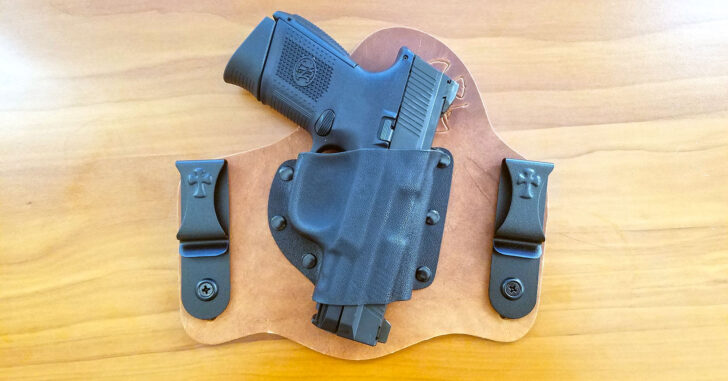Loving the firearm that you carry is great. Knowing the firearm that you carry is essential.
There should be a bond between firearm and concealed carrier, and it should remain strong at all times. Sound funny? It’s not meant to. Knowing how you interact with your firearm, and how it interacts with you, is an extremely important part of successfully carrying that firearm.
Hold it close
Each pistol available to the public has a different feel. Generally, we decide on the perfect carry firearm by the way it feels in our hand. It’s not 100% of the reason, but it should be a huge deciding factor. After all, we don’t want to be practicing with something that’s continuously uncomfortable and doesn’t fit our hand. That’d be silly.
Know what to feed it
Some pistols are picky with what they eat. If you haven’t been shooting the same ammunition at the range as what you carry each day, you don’t have a good bond with your firearm. Making sure that the ammo you carry is properly fed through your firearm is a must, and I don’t mean just a few rounds. Take it through the paces and really feed it your carry ammo. I know it can sometimes be expensive, but I’d rather make sure my pistol eats the ammo instead of finding out that it chokes in front of the bad guy.
Let it breathe, but keep it secure
We’re talking about retention here. This bond is between yourself, the firearm and the holster you choose to carry. Retention is an important part of any carry system, and you don’t want that retention to be too strong or not strong enough. Your draw should be practiced daily, not only for muscle memory, but also to make sure that your holster is still in tip-top shape. For example, if a screw on your holster loosens up, it could change the retention drastically. That’s not good if you’re out and about, so be mindful of your retention each day.
Know how it feels and what it does when you sit down, lean over, or any other movements that you make. It should stay close at all times and show no signs of ever leaving you. It’s love, really.
Keep it clean
After each trip to the range, I like to give my firearm a good cleaning. Some call this overkill, but I call it cleanliness. It simply comes down to regular maintenance, because we all know that if we take care of things, they’re generally going to last longer than if they’re neglected.
Know how it handles
With your carry firearm, you should know exactly how it feels while you shoot your self-defense ammo. You should know exactly how much recoil there will be and you should know exactly when the trigger is going to break. You should also be aware of any malfunctions and if one is found, it should be fixed as soon as possible, before you ever carry it again.
KNOW IT
You shouldn’t have any surprises with your carry firearm. You should be in-tune with it and know exactly what to expect when handling it. And, if something goes wrong, being able to remedy the issue is important as well.
This is your baby, and potentially your life-line if you ever need to use it for self-defense. Having that understanding is an important step to successful carry.
Some people laugh when I say “Have a bond with your firearm”, and all I can do is sit back and hope the advice is taken.
The conclusion? Don’t just purchase your concealed carry firearm and throw it on your hip. Use it, learn about it, understand it. With that, you’ll be confident and ready.

